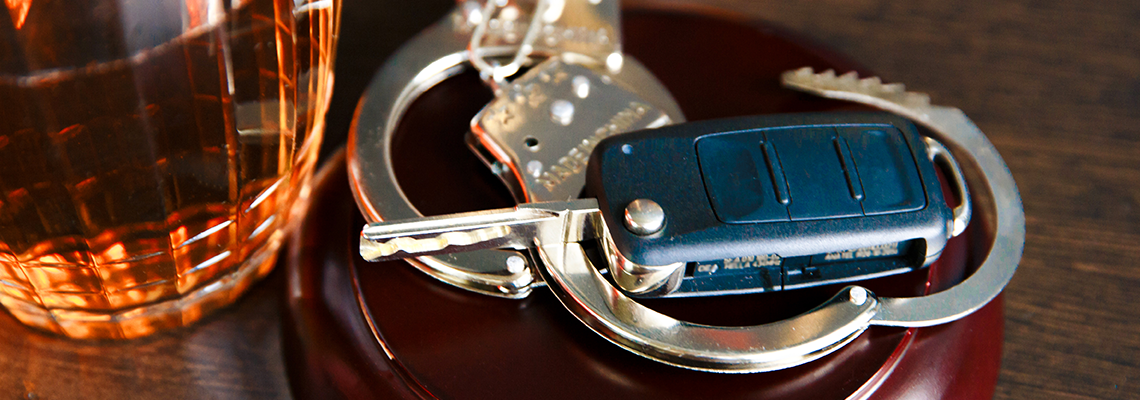
The Pseudo-Science of Field Sobriety Testing
In some states, there are separate offenses for driving under the influence (DUI) and driving while intoxicated (DWI), but in Missouri, the two terms are used interchangeably, with DWI being the preferred usage. Both terms refer to the operation of a motor vehicle with a blood alcohol content (BAC) high enough to result in impaired driving. That BAC level for any driver in Missouri (ages 21 or older) is 0.08 percent; for those under 21, it is just 0.02 percent.
We’ve no doubt all driven past scenes on a road or a highway where a police officer has pulled someone over and is making them go through a bunch of physical challenges to test their level of impairment. These challenges are part of what is officially known as law enforcement’s Standardized Field Sobriety Test (SFST) battery, or “Roadside Olympics” in popular jargon.
The SFST battery was studied and developed by the National Highway Traffic Safety Administration (NHTSA) beginning in 1975, and by 1981, police had begun using the battery to test drivers suspected of being impaired to see if their responses indicated a level of alcohol in their system sufficient to warrant a DUI/DWI arrest.
Under Missouri law, you are not required to submit to an SFST, but no police officer will tell you this when they pull you over. Also, if you do refuse the test, it’s likely you’ll be hauled into the station and administered a chemical test, which you cannot refuse without losing your driving privileges for one year.
Though three tests among the full range included in the SFST battery are considered at least 65 percent accurate, overall results – depending on the officer administering the test – can be highly subjective. If your DUI charge is based solely on a Field Sobriety Test, you can challenge it in court on several fronts, but a chemical (or blood) test presents far fewer options for challenges.
If you’re facing a DWI charge in or around Kansas City, Missouri, contact me at Guilfoil Law Group. I am a dedicated DWI defense attorney experienced in cross-examining police officers in DWI cases about their use of the Field Sobriety Test. In fact, I have written a chapter titled “Standardized Field Sobriety Testing and Cross-Examination of the Arresting Officer” for a series of books by The Missouri Bar Association.
I also proudly serve clients in Polk County, Platte County, Jackson County, and throughout the state of Missouri.
History and Types of Field Sobriety Tests
As mentioned briefly above, three of all available Field Sobriety Test challenges are considered the most accurate and are the most widely used. These three were decided upon during initial NHTSA testing and studies, which showed that officers had a whopping 47 percent error rate in determining the BAC in the person being tested. (At the time, the BAC rate for DWIs stood at 0.10 percent).
By limiting the Standardized Field Sobriety Test battery to three tests, the NHTSA researchers were able to increase the accuracy rate of the results. The horizontal gaze nystagmus test, when standardized by NHTSA, yielded a 77 percent accuracy rate. The walk-and-turn challenge came in at 68 percent accuracy, and the one-leg stand at 65 percent. Note that even with the most accurate of these tests, however, the administering officer will be wrong 23 percent of the time on average.
The horizontal gaze nystagmus test checks for involuntary jerking of the eyeball when the suspect is asked to follow a pen or flashlight 12 inches from his or her face while the officer moves it back and forth. The theory is that, the higher the BAC, the more the eyeballs will jerk involuntarily.
The walk-and-turn test requires the driver to walk heel-to-toe while following the officer’s directions, such as, “Now, turn around and walk back to the starting point.”
The one-leg stand test requires the driver to stand on one foot with their hands to their side while counting to a specified number.
Where the SFST Results Can Go Wrong
To begin with, there’s at least a 23 to 35 percent chance that the officer will misjudge your responses to the tests being administered. There’s also officer error or even prejudice. For instance, if the officer moves the pencil or flashlight too quickly during the gaze test, your eyeballs may automatically jerk as a result, alcohol or no alcohol.
The officer’s tone or demeanor can also cause the subject driver to become nervous or apprehensive, making it difficult to follow instructions or even to move as freely as the person would under non-threatening circumstances.
Other physical and mental conditions of the driver being tested can also make the tests difficult to perform. The person’s age could be a factor, making mobility more difficult. A person’s prior physical injuries or conditions could also affect their walking ability and/or coordination and motor skills. And, some people simply have a harder time understanding and following directions than others do.
Get the Facts From Guilfoil Law Group
Roadside stops are generally recorded by the police officer, so the videotape of the SFST can be used to evaluate and challenge the officer’s actions during administration of the tests. In general, Field Sobriety Tests have a somewhat spotty record of accuracy, given the subjective nature of how the tests are administered and evaluated by the officer.
When you bring your case to Guilfoil Law Group, you will be treated on a personalized, one-on-one basis. You will be presented with all the options available for challenging the results and for fighting for the best outcome possible if you go to trial. You will participate in all decisions.
If you’ve been charged with a DWI in or around Kansas City, Missouri, reach out to Guilfoil Law Group immediately for a free consultation. A DWI is not something you want on your record, so take the steps necessary to obtain the best legal defense available.
